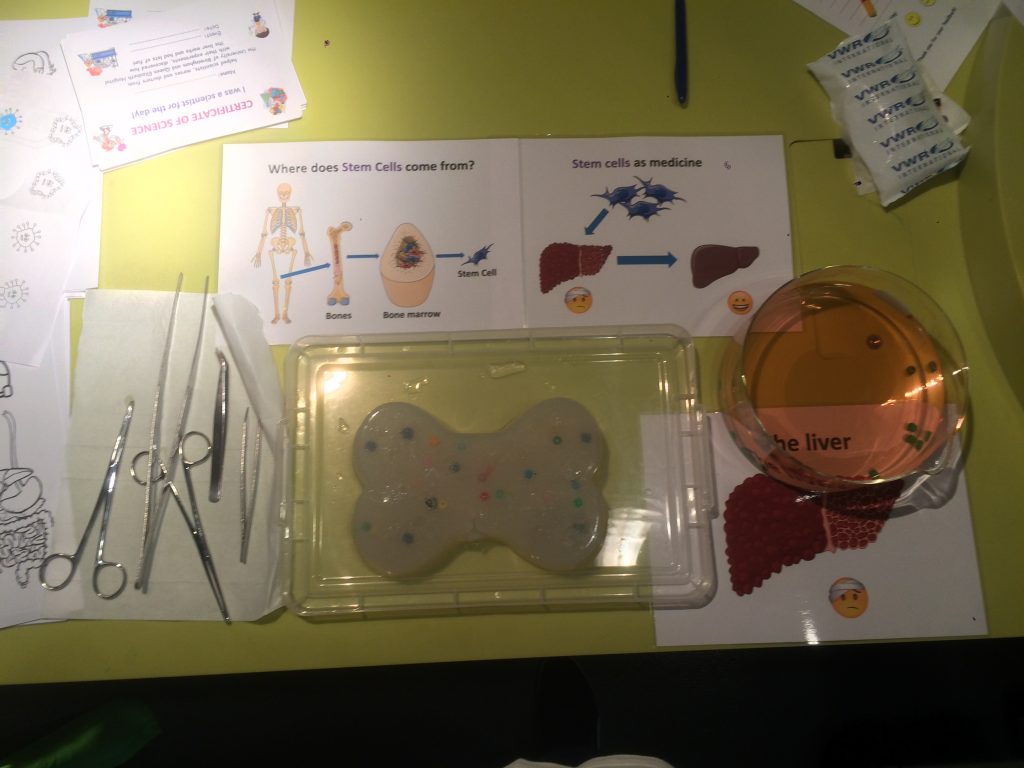 Ditte won the Genomics Zone in June 2014. She donated £200 to The African Science Truck Experience (TASTE), to help promote science in schools in Africa. The remaining prize money was used to develop a stem cell workshop at the Thinktank Science Museum, Birmingham. Ditte tells us more about it here.
Ditte won the Genomics Zone in June 2014. She donated £200 to The African Science Truck Experience (TASTE), to help promote science in schools in Africa. The remaining prize money was used to develop a stem cell workshop at the Thinktank Science Museum, Birmingham. Ditte tells us more about it here.
If you’re a scientist who’d like the funding to develop your own outreach activities, apply to take part in I’m a Scientist at imascientist.org.uk/scientist-apply
When I won the competition, I was working on a virus genomics project. I have since then changed research field to stem cell therapy in liver diseases, so wanted to develop an activity which would explain where stem cells are found and why they potentially will be a good form of therapy for patients with poor livers.
The liver is the largest internal organ in the human body and plays a vital role in digestion, production of proteins and cleaning the blood. It is very important that we look after our liver, since we can’t survive without it. There are however over 100 different liver diseases, which together effect more than 2 million people in the UK. Many of these diseases have no treatment and it is therefore important that we develop new treatments, such as stem cell therapy.
It was very important to me that the children and adults understood that unlike donating a heart or liver, a stem cell donation is relatively simple and more or less pain free. We have so many stem cells to spare that it is important that we donate our cells when someone else desperately needs them.
The reason why stem cells have become such a popular therapy, is because they are able to change their function when they are moved from one place to another in the human body. If you put them into a broken bone then they will start acting like a bone cell and start healing the bone and the same is possible with the central nerve system and muscles.

The materials for my workshop. The stem cells had to be removed from the model bone using real surgical instruments.
The reason why they can do this is because they are thought of as “young cells”, which have not yet decided what they want to be. We all have millions of stem cells, which in theory can be taken out and transferred to somewhere else in our body, which needs some assistance in recovering, or to another person who is poorly. It is almost like we walk around with our own personal medicine cabinet inside us.
Stem cells can be found in many different places in the human body, but the best known ones are found inside our large bones. It can be very tricky to isolate them and to tell them apart from all the other types of cells, which are also found in the bone. For my workshop I had therefore made a large “bone” out of jelly, which contained many different “cells” (small beads), some were stem cells, with magical powers of changing themselves when they were put into a new place (in this experiment it was the “liver”) and others were normal cells which wouldn’t change.
The workshop participants had to remove the “cells” with surgical equipment, without breaking the bone and then transferring them to a container representing the poorly liver. If the transferred cell changed colour and tried to look like the other “liver cells”, then the participant had found a stem cell and won a small price.
All in all the event was highly successful and I really enjoyed watching future surgeons and scientists enthusiastically identifying “bone stem cells”. All of the items bought can be reused, so I’m looking forward to performing the activity again in the near future.

